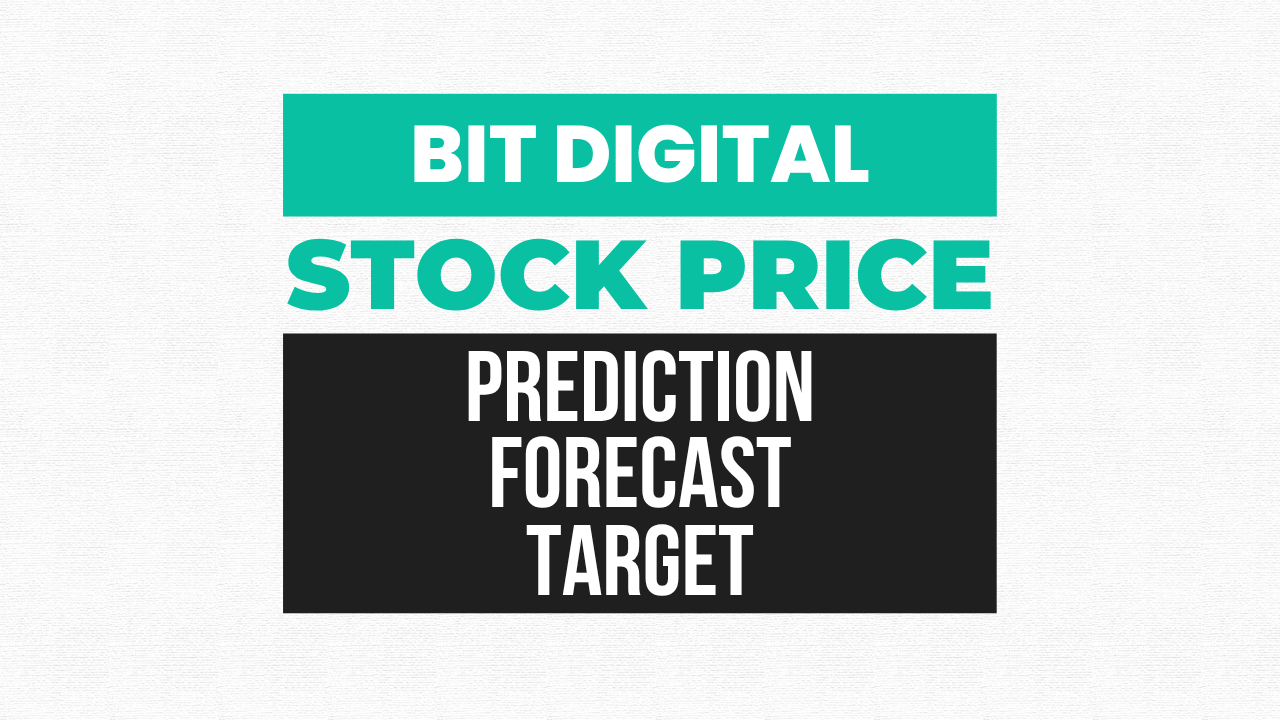1. Company Overview
Bit Digital, Inc. (BTBT) is a significant player in the world of cryptocurrency and high-performance computing (HPC). The company focuses mainly on Bitcoin mining and building AI infrastructure to support digital assets.
Also Read – I Created the Best Bitcoin Guide You’ll Ever Read
Below is a detailed look at the company’s main details, followed by a brief summary of what it does and why it matters.
| Company Name | Bit Digital, Inc. |
| Sector | Financials |
| Industry | Capital Markets / Cryptocurrency Mining |
| IPO Year | 2018 |
| Stock Exchange Listed | NASDAQ |
| Founded By | Not publicly specified |
| Established In | 2015 (restructured as Bit Digital) |
| Specialization | Bitcoin Mining, HPC Infrastructure, Digital Asset Staking |
Bit Digital was founded in 2015 and is based in New York City. It went public in 2018 and is listed on NASDAQ. The company runs Bitcoin mining operations in the United States, Canada, and Iceland, making use of sustainable energy sources to power its mining efforts. Alongside mining, Bit Digital has grown its Bit Digital AI division, which offers cloud computing and colocation services designed for AI and machine learning tasks. As of the first quarter of 2025, the company has no debt and holds $141.4 million in liquid assets, including 742 Bitcoins (BTC) and 27,623 Ethereum (ETH). This strong financial position sets Bit Digital up well to benefit from the rising demand for digital assets and AI technology.
2. The Stock Market: Fundamentally Driven
Stock prices generally move based on a mix of company-specific results, broad economic conditions, and industry trends. For Bit Digital, important factors include how profitable Bitcoin mining is, growth in HPC contracts, the value of digital assets, and changes in regulations. In Q1 2025, Bit Digital earned $25.1 million in total revenue. This was down 17% compared to the same quarter the previous year, mainly because Bitcoin mining revenue dropped by 64% to $7.8 million. However, this was balanced out by a strong 84% increase in revenue from cloud services, which rose to $14.8 million. The company’s stock price is also affected by Bitcoin’s price swings after the 2024 halving event, energy costs, and how quickly AI technology is being adopted worldwide. Bit Digital’s long-term success depends on how well it can manage these ups and downs.
3. Sector Overview: Financials
Understanding the Sector
Bit Digital operates within the Financials sector. This sector includes traditional banking, payment processing, insurance, and newer areas like cryptocurrency and fintech. It plays a key role in the global economy by helping move money and encouraging innovation. Bit Digital’s focus on Bitcoin mining and HPC puts it at the intersection of fintech and digital assets, tapping into the growing cryptoeconomy.
Fundamental Factors Affecting the Sector
Several important factors shape the Financials sector:
- Regulatory Environment: Rules around cryptocurrency taxes and anti-money laundering (AML) laws directly impact how companies like Bit Digital mine and stake digital assets.
- Cryptocurrency Prices: Changes in the prices of Bitcoin and Ethereum strongly affect mining revenue and the value of digital holdings.
- Technological Innovation: Advances in blockchain and AI increase demand for HPC and digital asset platforms.
Growth and Development in Recent Years
The Financials sector has seen rapid growth, especially in its cryptocurrency and fintech parts. Digital assets have become more widely accepted. Bit Digital’s 84% jump in cloud services revenue to $14.8 million in Q1 2025 reflects this shift to multiple income sources. The company’s $53.2 million purchase of a 200MW data center in North Carolina and a $700 million HPC contract with Boosteroid show the industry’s move toward AI infrastructure. Reduced trade tensions between the U.S. and China and a strong S&P 500 in May 2025 have also helped crypto-related stocks, creating a positive market environment.
4. Industry Analysis: Cryptocurrency Mining / HPC
Exploring the Industry
Within the Financials sector, Bit Digital operates in the Cryptocurrency Mining and HPC industry. This includes Bitcoin and Ethereum mining, digital asset staking, and providing high-performance computing services for AI. The industry is known for its ups and downs, energy-heavy operations, and a recent shift towards earning more from AI services. Bit Digital competes with companies like Marathon Digital and Core Scientific but stands out because of its growing HPC business.
Fundamental Factors Impacting the Industry
Key things that affect this industry include:
- Bitcoin Halving: The 2024 halving cut mining rewards in half, squeezing profit margins and encouraging miners to find other revenue sources like HPC.
- Energy Costs: Cheap, clean energy is crucial for miners to stay profitable.
- AI and HPC Demand: As AI and machine learning grow, so does the need for cloud computing services.
Recent Growth and Developments
Since the 2024 Bitcoin halving, the Cryptocurrency Mining and HPC industry has changed a lot. Bit Digital’s Q1 2025 numbers show a 64% drop in Bitcoin mining revenue, falling to $7.8 million due to reduced rewards and harder mining conditions. At the same time, its HPC revenue jumped 84% to $14.8 million. Important deals include a $20.2 million contract for 576 Nvidia H200 GPUs, a $700 million cloud gaming deal with Boosteroid, and buying a 5MW Tier-3 data center in Quebec. Other players, like Marathon Digital starting Kaspa mining and Core Scientific upgrading AI data centers, also show the industry moving toward more diverse income.
5. Stock Growth and Fundamental Factors
Bit Rosenthal’s book The Road to Wigan Pier (1937) warns us about the social and economic risks of uncontrolled industrial progress. This caution applies to the crypto world’s fast growth. Bit Digital’s stock price rose 14.6% to $2.36 on May 17, 2025, after better-than-expected Q1 earnings. This shows the strength of its HPC division, despite the 64% drop in Bitcoin mining revenue. The company’s $700 million Boosteroid contract and $53.2 million data center purchase in North Carolina fit the industry’s shift to AI. Bit Digital holds $141.4 million in liquidity, including 742 BTC and 27,623 ETH worth about $161.8 million, helping fund future growth. But the company reported an adjusted EBITDA loss of $44.5 million, mainly because of $49.2 million in mark-to-market losses, showing the risks tied to crypto price swings. Bit Digital’s stock growth relies on its HPC momentum and digital assets, but mining difficulties and high valuations remain challenges.
6. Speculative Targets: Technical Analysis Insights
Technical analysis can help us guess where Bit Digital’s stock price might go. As of May 17, 2025, the stock trades at $2.36, with a 52-week range between $1.69 and $5.74. Some key indicators are:
- Moving Averages: The 50-day average ($3.11) is below the 200-day average ($3.51). This suggests short-term weakness but also room for recovery if positive news comes.
- Support and Resistance: Support lies near $2.00 (recent lows), while resistance is around $3.00, near the moving averages.
- Relative Strength Index (RSI): Estimated near 50, showing a neutral trend with potential to go up.
Speculative Long-Term Price Targets
Based on historical trends and Bit Digital’s fundamentals, assuming an average 10% yearly growth (similar to the S&P 500), and considering 5% to 15% growth range, here are possible price targets from today’s $2.36 price:
- 2030 (5 years):
- Median (10%): $3.80
- Lower (5%): $3.01
- Upper (15%): $4.74
- 2040 (15 years):
- Median (10%): $9.86
- Lower (5%): $4.90
- Upper (15%): $19.20
- 2050 (25 years):
- Median (10%): $25.56
- Lower (5%): $7.99
- Upper (15%): $58.14
These targets assume Bit Digital keeps growing its HPC business and benefits from a recovering crypto market. However, risks remain from future Bitcoin halving, higher energy costs, and tough competition. Technical signals suggest cautious hope, but long-term predictions are very uncertain because of crypto and AI market swings.
7. Long-Term Growth Prospects
Bit Digital’s future looks promising because of its move from just Bitcoin mining to building AI and HPC infrastructure. Its cloud services revenue jumped 84% to $14.8 million in Q1 2025, helped by the $700 million Boosteroid deal and a $20.2 million GPU contract. The company also added a $53.2 million data center in North Carolina and a 5MW facility in Quebec, increasing its HPC power. With no debt and $141.4 million in cash and crypto assets (742 BTC and 27,623 ETH), Bit Digital has the money to grow. Still, the 64% fall in mining income and a $44.5 million EBITDA loss show crypto’s ups and downs. Some analysts, including Clear Street, think Bit Digital’s HPC business is undervalued. If the company keeps diversifying and taking advantage of AI demand, it could bring big returns, but the risk level remains high and should be watched closely.
8. Conclusion
Bit Digital, Inc. is working hard in the tough Cryptocurrency Mining and HPC industry by shifting strongly toward AI infrastructure. The Financials sector around it also supports this move. Its Q1 2025 results, showing 84% growth in HPC revenue and smart acquisitions, prove it can handle mining struggles. Speculative price targets for 2030 ($3.80), 2040 ($9.86), and 2050 ($25.56) show possible gains. Still, Bitcoin halving effects, energy prices, and competition are risks to keep in mind. Investors need to balance Bit Digital’s exciting HPC growth and financial strength with the risks of its volatile mining business. This stock should be approached with both hope and care.
This article is for informational purposes only and should not be considered financial advice. Investing in stocks, cryptocurrencies, or other assets involves risks, including the potential loss of principal. Always conduct your own research or consult a qualified financial advisor before making investment decisions. The author and publisher are not responsible for any financial losses incurred from actions based on this article. While efforts have been made to ensure accuracy, economic data and market conditions can change rapidly. The author and publisher do not guarantee the completeness or accuracy of the information and are not liable for any errors or omissions. Always verify data with primary sources before making decisions.

